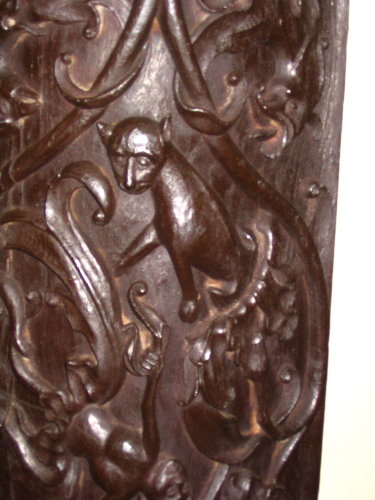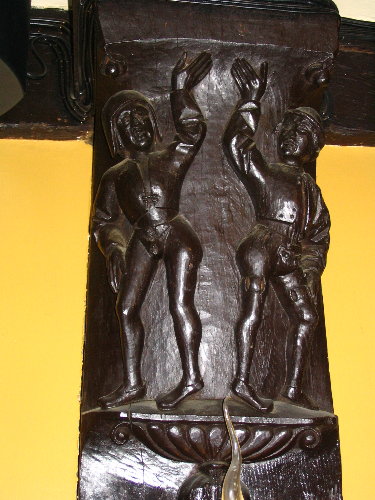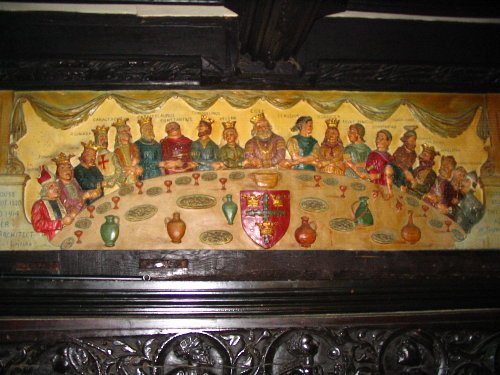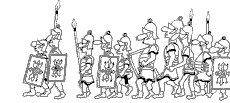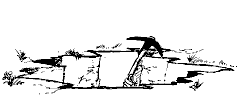PART
![]()
of your

GUIDED
TOUR
OF
COLCHESTER
Welcome to part D of our virtual tour, where we find ourselves having walked from Trinity Street and all its wonders, along a part of Culver Street West, tuning left and now standing in the 1970s constructed Culver Precinct, the closest that we get to having a Town Square.
![]()
1 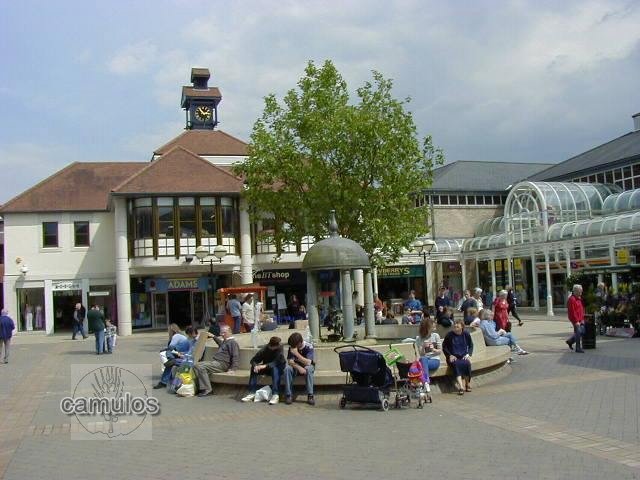
In the centre of the square, which is flanked by modern day shops and department stores, stands a water fountain with its central theme of an eringo root plant. The use of this plant to make a sweet tasting candied delicacy, was at one time, big business in the town. However the trade fell into decline some century ago. A feature worthy of note in the precinct is Colchester's second library, built in the 1930s and which was incorporated into the new plans - later to become a bookshop.
It is in this general area that the earliest evidence of human occupation in Colchester has been discovered. During the building works, a 2500BC inhumation, of the charred bones within Beaker style pottery, was discovered. Remembering that, where we stand, was an uninhabited hill top where ceremonial burials of this type were commonplace. An an ancient burial ground for the dead.
We now leave the Culver Precinct and walk west along Culver Street, cross over busy Head Street and along a narrow road, Church Lane, adjacent to an building built shortly after the Siege of 1648. This takes us towards the church of St Mary at the Walls, of mainly Victorian period and now used as an arts centre.
![]()
POST OFFICE ARCHAEOLOGICAL DIG
2 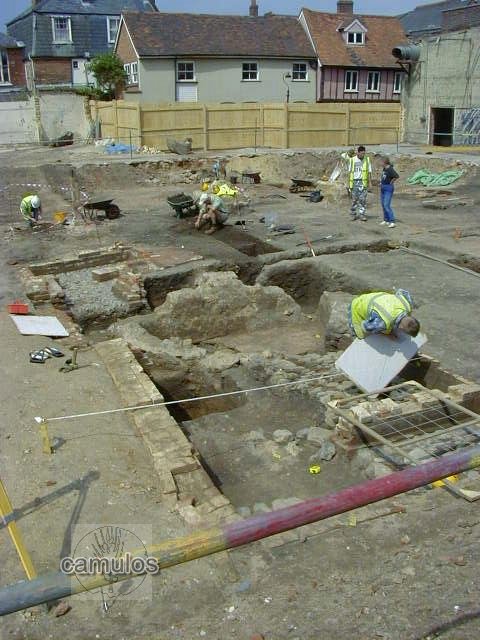
Back in 2000, we would be witnessing an ongoing archaeological dig here, that was investigating the archaeology of an area of land, the old Victorian built Post Office (that still stands) and the land behind it, that was due for development in Head Street. The town's main cinema now occupies the spot.

Digging down perhaps 3 metres below normal street level, the archaeologists come to the earliest Roman level, often accentuated by a dark layer that would indicate the effects of Boadicea's destruction in AD 60/61. The dig area had been extensively disturbed over the centuries by subsequent building operations, with finds of Roman pottery through to medieval artifacts to Victorian period finds. A late Roman period semi-circular water feature was uncovered, but with no obvious interconnecting buildings. There was evidence of tessellated pavements and many features which required investigation. The dig was completed at the end of August 2000, when building work for the new cinema started. There are various archaeological digs that go on each year, whenever an area comes up for development.
![]()
3 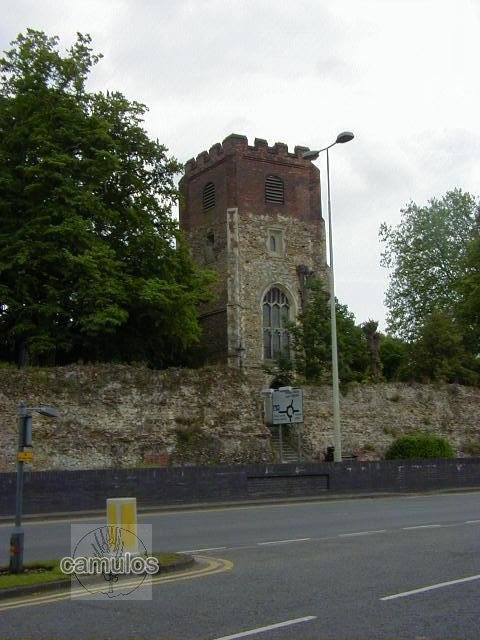
So, moving on, past the fine Georgian period Quaker Meeting House on the left and the Mercury Theatre to the right, we come to St Mary at the Walls church.
Ahead we see part of the town's Roman wall, through which a hole has been cut in antiquity and through which we are going to pass. It is not an original Roman feature!
There is a separate virtual tour of the Roman walls in their entirety, which may be visited Colchester Town Wall.
We are now standing, for the second time during this tour (the first when we looked at Scheregate), outside the Roman walls of the town. We are looking at St Mary at the Walls church, the tower dating from the 15th century, and which was extensively damaged during the Siege of Colchester in 1648. The reason for this is that (allegedly) one Thompson, a one eyed gunner, had placed himself and his saker (a small cannon) on top of the tower and was causing considerable damage to Lord Fairfax's attacking forces. This brought a concentration of Roundhead fire onto the church, whereupon, eventually, Thompson and his gun, came tumbling down. In recent times, local folklore has attached this story to that of the nursery rhyme character Humpty Dumpty and has claimed it as a Colchester story. However, whilst it makes a good story, there is no proof of this. But hey, if Glastonbury and Loch Ness can weave their stories, why shouldn't we? More pictures of this church may be seen at Colchester Images.
![]()
4 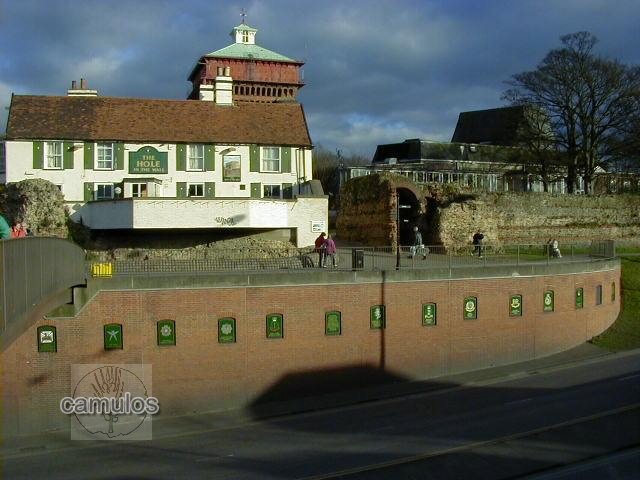
Staying outside the walls for a little longer, we walk northwards to get a glimpse of Balkerne Gate. So named because it was baulked, filled in, stopped-up, in antiquity, probably in the late Roman period, when its ease of use was so difficult, due to the steepness of the hill and Head Gate being much easier. It was here, of course, that the Romans erected their triumphal arch, facing the defeated British, living to the west in the Sheepen area of Colchester. The Balkerne Gate was simply a development of that arch. Indeed its closing off is probably for this very reason that the Balkerne Gate is the best preserved Roman gateway in Britain, as there was no more need for vehicular access. Whilst here, please spare a thought for those poor souls who were martyred for their faith in the 16th century by being burned at the stake here, for their heresy.
When the wall was built in the first and second centuries AD, there were five main entrances into the town incorporated into it. This one, facing west, Northgate in the north (unsurprisingly), Eastgate, Headgate and Southgate. A smaller postern gate, known as Duncan's Gate, was situated in the north wall. The other gates were gradually removed as Colchester gave way to the relentless pressure from larger and larger vehicles requiring easy access into the town centre.
Also please note the series of plaques, installed in 1999, in commemoration of 17 army regiments that have been stationed in the town in the past.
5 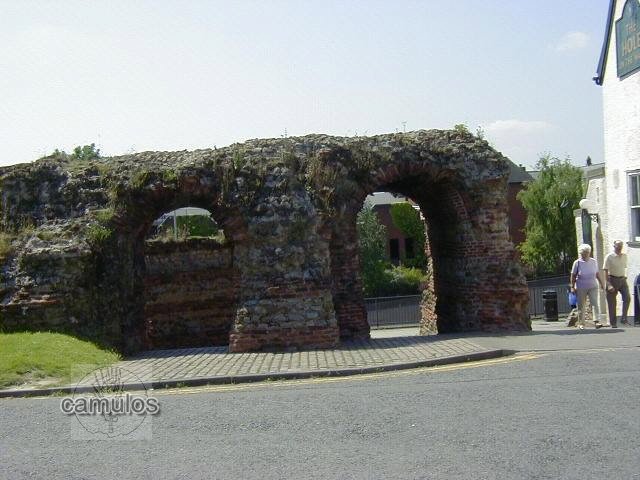
The Balkerne Gate, not standing on an established traffic route (but in line with our High Street), survived the destruction. The motor car is king in this town!
More about the Balkerne Gate can be found at Colchester Town Wall.
![]()
6 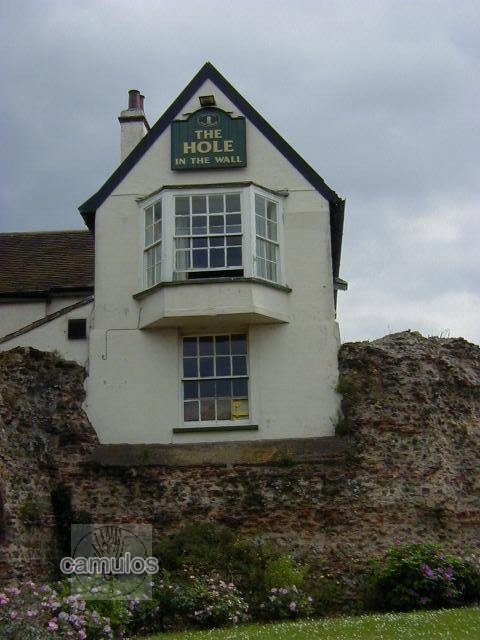
Whilst standing here, looking east, we can see the ancient Hole in the Wall pub, built onto the Balkerne Gate. The 'hole' that it refers to was made in 1843, with the arrival of the railway to Colchester. The landlord realised that he had a commanding view of this new arrival and so he bashed a hole through the Roman wall to afford his customers a good view. It would have been good for business. And so it was that the Kings Head became the Hole in the Wall. He would never have got away with it today!
From this point, we also see the imposing Jumbo water tower.
![]()
7 
The water tower was completed in 1883 to enable running water to be made available to the townspeople, therefore improving sanitary conditions in the borough - for those that could afford to pay for their clean water. It took 1.2 million bricks to construct it. It was so disliked by the vicar of the parish, whose vicarage was situated very close to the edifice, that he likened it to Jumbo, the name of an elephant at London Zoo, which was topical at that time, having been controversially sold to a circus. The nickname stuck and Jumbo has been with us ever since. Now disused, a political football ever since some clown put a banner up on the tank calling for votes, and now in need of being put to some kind of use. It has had a number of owners, ever since the water authority sold it for one pound sterling. The view from the top is said to be marvellous. Wouldn't it make a great public viewing platform?
![]()
At the foot of Jumbo stands the 1972 opened, Mercury Theatre, so named as a reference to a statue to the Roman god, Mercury, that was ploughed-up in a field in the Gosbecks area of the town, many years ago. Mercury is equated to the celtic god, Camulos, both gods of war. It was from Camulos that the ancient name for Colchester, Camulodunum, derived. We can vouch for the excellence of the productions here. This is another of Colchester's success stories.
8 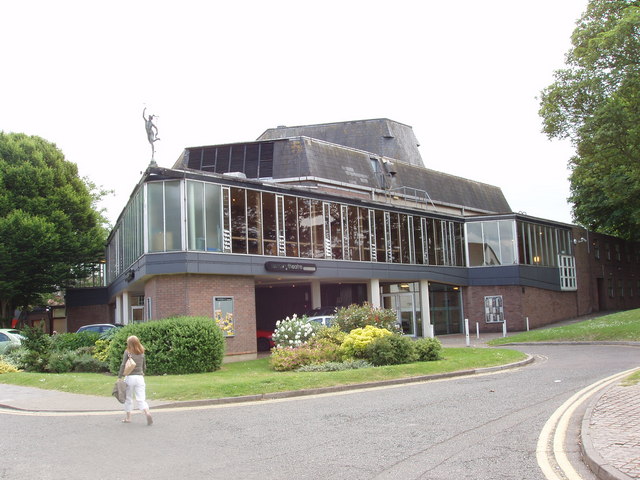 8a
8a 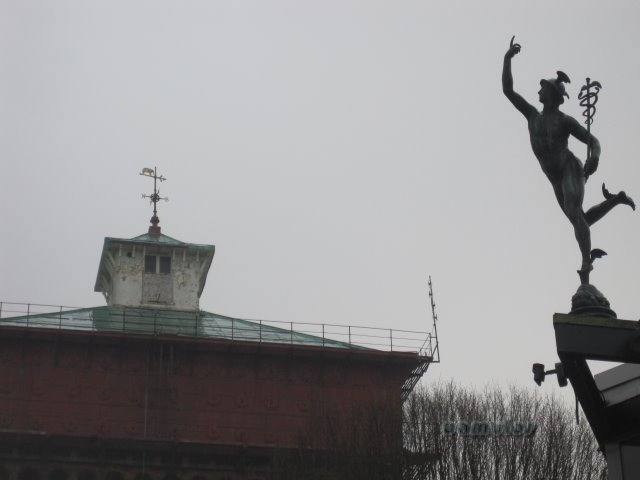
A little further down the hill, we find a section of our famous Roman wall, perhaps the best preserved section that is exposed to view. Of course, the best preserved sections are hidden from view by the earth backfill to the rear of the wall, completely unaffected by weather, small boys climbing or vegetation growth.
![]()
9 

This is one of the better preserved sections of our Roman wall, showing how red tiles and septaria were used in a layered construction. The wall would originally have stood 6 metres high with a defensive trench in front to add to the difficulties of any attacking forces. The land behind the wall was at a higher level, giving the defenders a platform from which to defend themselves. It is possible, and to be recommended, to take a walk around the entire wall perimeter, 3100 yard (2800 metre) length. There have been some medieval bastions added in places and in some areas the wall has been completely swallowed up in the fabric of adjoining buildings. The now disbanded 'Friends of Colchester Roman Wall' were formed to enable information boards to be made and installed around the perimeter of the wall, which adds a great deal to our understanding of the story of these amazing walls. Their job was completed in the 2010s with the provision of 13 such boards.
10 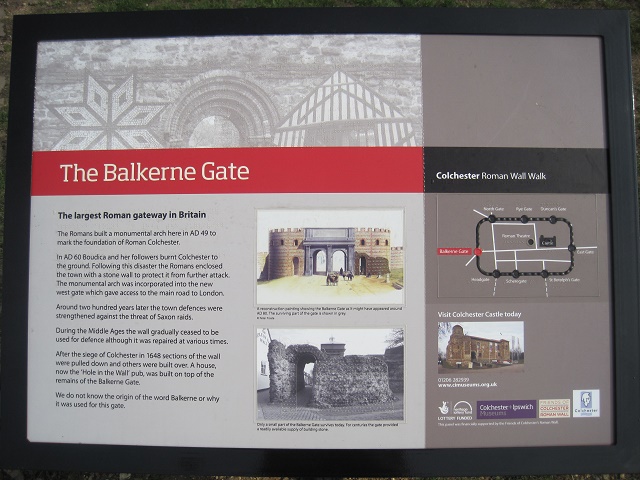 11
11 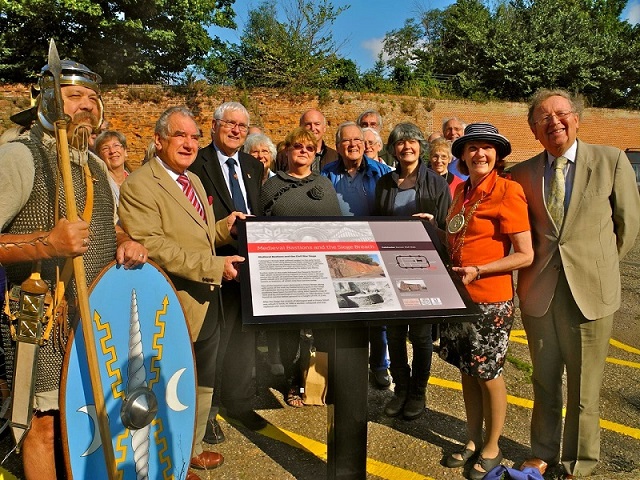
There has also been a lot of damage caused over the centuries by vandalism and cannon fire. Whatever the case, our Roman wall is unique and the oldest surviving Roman wall in Britain!
![]()
12 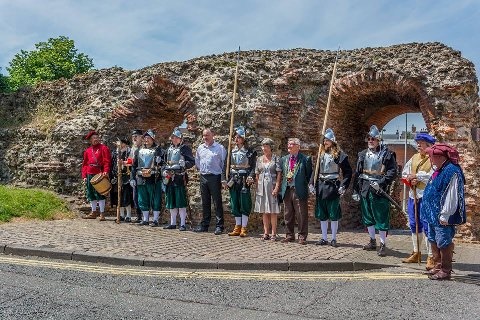
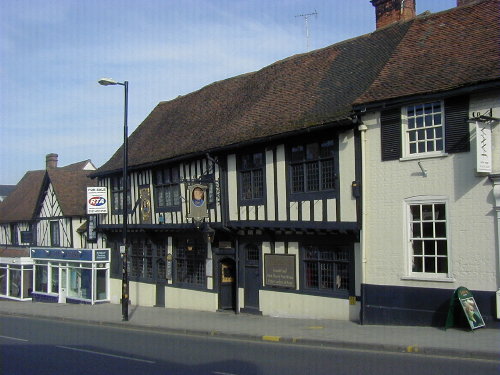
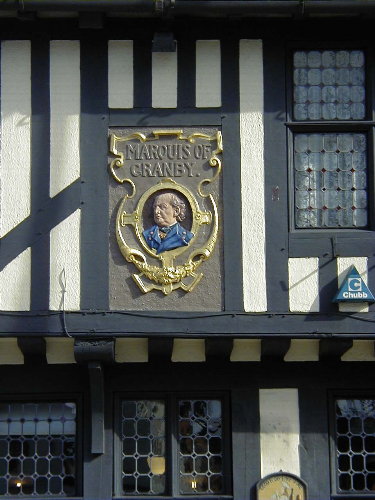
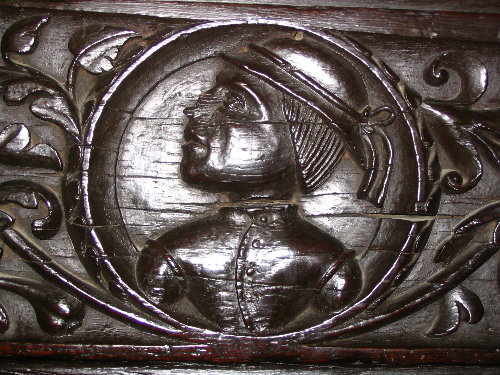 16
16 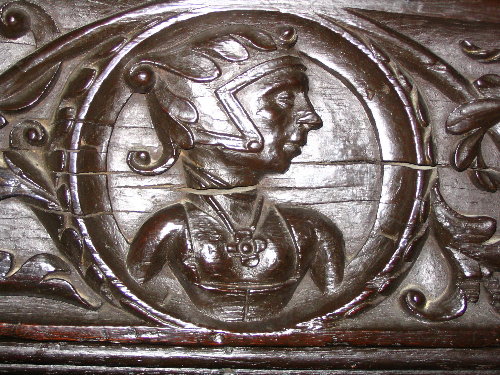
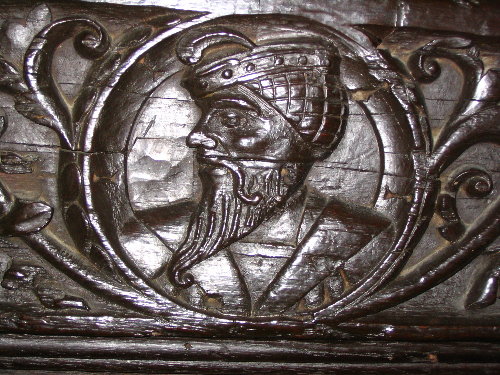 18
18 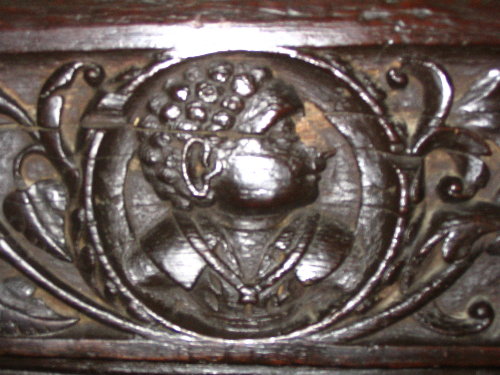
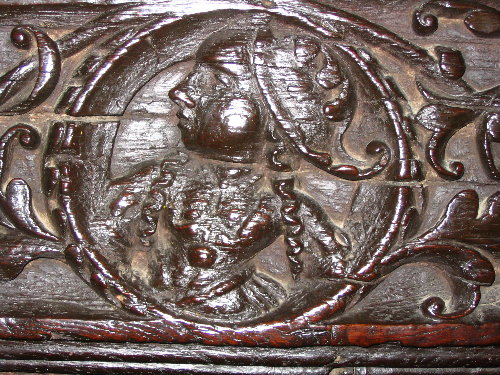 20
20 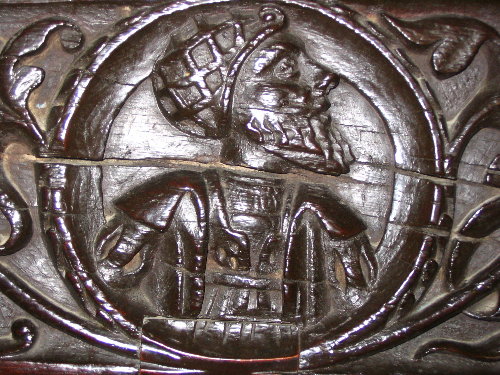
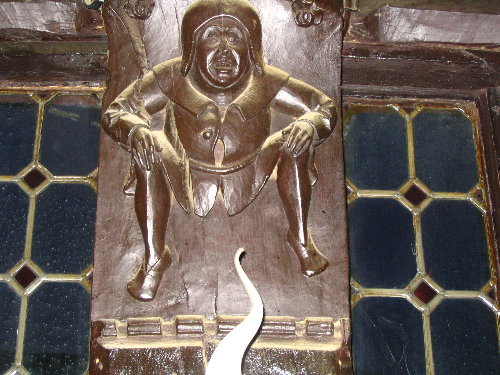
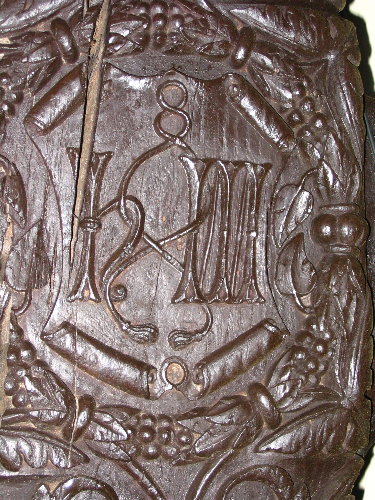 23
23 